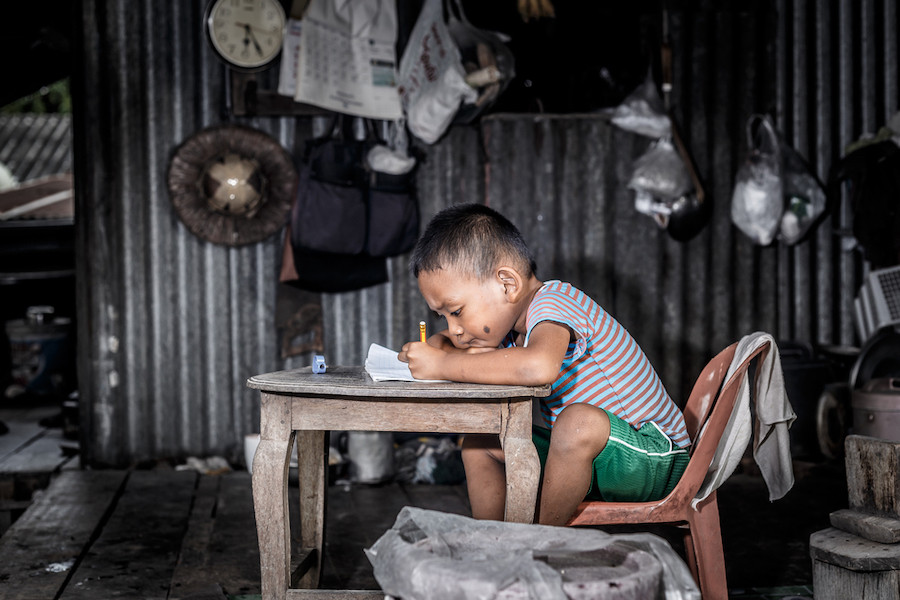Popular Reads
Top Results
Can't find what you're looking for?
View all search resultsPopular Reads
Top Results
Can't find what you're looking for?
View all search resultsBeing born poor affects a child’s brain activity
Researchers studied the brain function of children aged between four months and four years in rural India.
Change text size
Gift Premium Articles
to Anyone
C
hildren born into poverty show key differences in early brain function, according to new research from the University of East Anglia (UEA) in the United Kingdom.
Researchers studied the brain function of children aged between four months and four years in rural India.
They found that children from lower-income backgrounds, where mothers also had a low level of education, had weaker brain activity and were more likely to be distracted.
Lead researcher Prof John Spencer, from UEA’s School of Psychology, said: “Each year, 250 million children in low and middle-income countries fail to reach their developmental potential.
“There is, therefore, a growing need to understand the global impact of poverty on early brain and behavioral development.
“Previous work has shown that poverty and early adversities significantly impact brain development, contributing to a vicious cycle of poverty. But few studies have looked at brain function early in development.
“We wanted to find out more about the functional brain development of children born into poorer backgrounds – to see why many do not reach their full potential.
“This work is the first step in intervention efforts designed to boost early brain health before adversity can take hold.”
The team carried out their study in Uttar Pradesh, which is the most highly populated region in India.
Using a portable functional near-infrared spectroscopy (fNIRS) device, they measured the brain activity of 42 children.
This device shines near-infrared light into cortical tissue through sources placed on the head via a special cap, linked to a computer.
Read also: Minding the poverty gap in Indonesia with geography
They investigated the children’s visual working memory, i.e. how well they are able to store visual information and detect changes in the visual environment when they occur.
“We use our visual working memory around 10,000 times a day. Children begin to develop this skill in early infancy and it gradually improves through childhood and adolescence.
“We know that it is an excellent marker of early cognitive development,” said Prof Spencer.
The study was conducted in partnership with the Community Empowerment Lab based in Lucknow, India.
Participants were recruited from villages around Shivgarh in Uttar Pradesh. They took part in a visual test involving blinking displays of colored squares.
The goal of the test was to see if children could remember the colors well enough to detect that there was always a color change on one side of the display, while the colors on the other side always stayed the same.
Factors such as parental education, income, caste, religion, the number of children in the family, and economic status were taken into account.
The results were compared with children from families in Midwest America.
The research team found that the Indian children from families with low maternal education and income showed weaker brain activity and poorer distractor suppression in the left frontal cortex area of the brain that is involved in working memory.
The study also demonstrates that portable neuroimaging technologies can be used in rural parts of the developing world, bringing innovative technologies to places most in need of early assessment tools.
“Although the impact of adversity on brain development can trap children in an intergenerational cycle of poverty, the massive potential for brain plasticity is also a source of hope.
“By partnering with families in the local community and bringing innovative technologies to the field, we are hoping that together we can break this cycle of poverty in future work.”
This study was published in the journal Developmental Science. – UEA
This article appeared on The Star newspaper website, which is a member of Asia News Network and a media partner of The Jakarta Post











